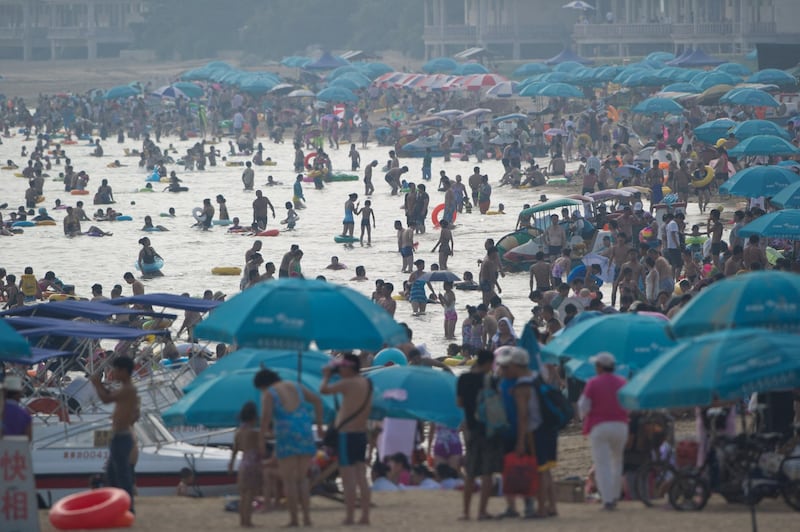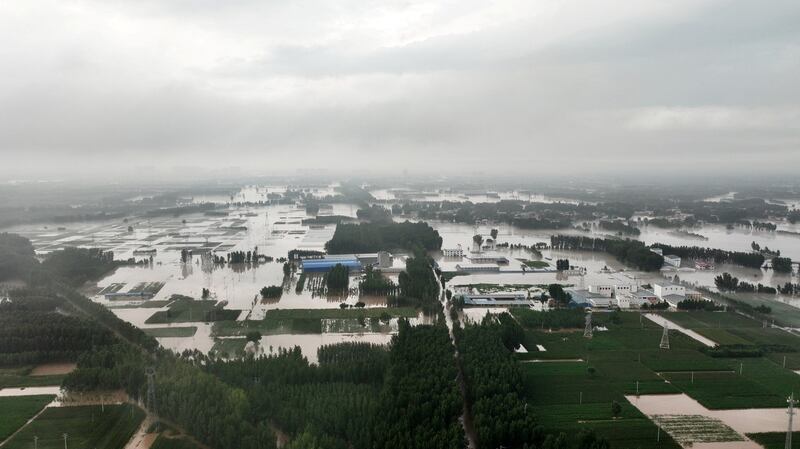The Chinese Communist Party annual summer holidays are underway, despite the worst flooding in more than 140 years in northern China.
The floods have left at least 20 dead and millions displaced. In Hebei Province over 1.2 million people have been evacuated to safety, with some officials coming under fire for suggesting that Hebei and other surrounding areas were sacrificed to alleviate flooding in the Chinese capital, as well as to save pet leadership development projects.
In keeping with traditional low-key signaling, on Thursday, the head of the Party’s central secretariat Cai Qi met with “experts” in Beidaihe.
The two-week holidays in Beidaihe – a coastal resort on Bohai Bay, about 300 kilometers (186 miles) east of Beijing – are usually announced by a senior Chinese Communist Party (CCP) leader meeting with “experts.”
Cai Qi is No. 5 in the CCP hierarchy.
President Xi Jinping and other senior Politburo members have already disappeared from the spotlight for several days – Xi was last seen in public on Monday. Neither Xi nor Premier Li Qiang have spoken in public on the flooding.
State broadcaster CCTV continues to report on their directives but not on their whereabouts.
Routine government and policy activities will slow down, as they regularly do in the first two weeks of August. The Ministry of Foreign Affairs suspended its daily press conference for two weeks on Monday.

Jeremy Goldkorn, editor in chief of The China Project, said in an emailed newsletter: “Beidaihe is like the Hamptons for Chinese communists.”
@MacroPolo, a Paulson Institute think tank, called Beidaihe China's Camp David.
“Just like we never know what New York’s financial elite and some of their political friends discuss during their summer breaks at the Hamptons, what happens at Beidaihe stays at Beidaihe,” said Goldkorn.
Some, including @MacroPolo, would argue that is not entirely correct. Famously, China’s disastrous Great Leap Forward – a failed attempt to recast China overnight as a manufacturing giant by melting saucepans and cutlery (leading to mass famine) – was allegedly conceived and launched by the beach in 1958, or at least hastened into being there.
In the same year, Mao decided to shell the Kuomintang-held island of Quemoy, now better known as Chinmen, or Jinmen. Attempts to take the island were repelled by KMT troops.
In 1971, Lin Biao, a People’s Liberation Army general and one of Mao Zedong’s most trusted allies is believed to have fled the beach resort, destination the Soviet Union. His plane “crashed” amid one of the biggest purges in the history of the People’s Republic of China.

The Beidaihe summer retreat was the brainchild of Mao Zedong in 1953, and it grew in importance in the years that followed.
"Interrupted during the Cultural Revolution, Beidaihe wasn't restored until 1983 under Deng Xiaoping," writes @MacroPolo. "Under the Deng [Xiaoping] era, the seaside retreat continued to play an important role in Chinese elite politics, where reform decisions and personnel choices were made."
Beijing’s moat
This year’s Beidaihe gathering takes place against a background of pointed criticism of government officials over the extensive flooding in northern China.
Bloomberg reports that "a hashtag playing off a comment by Ni Yuefeng, the Communist Party boss of Hebei province, had more than 80 million views on China's Twitter-like Weibo on Thursday.
Ni riled Chinese “netizens” by calling for cities in the province bordering Beijing to “resolutely play a good role of moat for the capital.”
The Hebei head official even went so far as to say that the Xiong’an area – a project that Xi has described as being of “millennial significance” – represented “the top priority of flood control in our province.”

Local Hebei residents have publicly posted accusations on social media that towns such as Zhuozhou, which has a population of 630,000, and Baoding City, with a metropolitan population of more than 2 million suffered due to flood discharges aimed at protecting Beijing.
One Weibo user posted a photo of a museum in Baoding with a “sign [that] lists the objectives of the city’s flood-control efforts,” reported Bloomberg: “First, protecting Beijing and Tianjin. Second, protecting Xiong’an. Third, protecting Baoding itself.”
“If local leaders dared to put this slogan on a board and showed the public, they should also dare to face people’s questioning,” said the Weibo user in a post that later disappeared.
A middle school teacher in Hebei Province who only provided the surname Tian told the RFA Mandarin service that while natural disasters caused suffering and many deaths in China, “man-made disasters” should not be ignored.
“I saw on the Internet that the flood was caused by the water reservoir being opened to protect Xiong’an and Beijing,” Tian told RFA. “This natural disaster was mainly caused by man-made disasters. I believe that many people must have died [as a result]."
Edited by Mike Firn and Taejun Kang.
